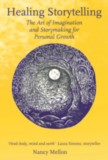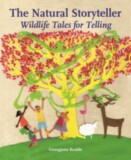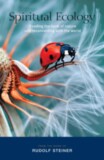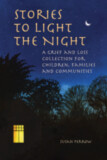Storytelling for Nature Connection
Environment, Community and Story-based Learning
Foreword by Jonathon Porritt
With Charlene Collison and Jon Cree
- Publisher
Hawthorn Press - Published
9th March 2022 - ISBN 9781912480593
- Language English
- Pages 376 pp.
- Size 6.1" x 9.2"
“We are all playing a part in the story of our beautiful world. In too many places the beauty now lies sleeping. . . . This book brings fuel for the imagination, techniques for telling tales and hope for a happy ending.” — Fraser McKechnie, ranger, National Trust for Scotland
Storytelling for Nature Connection is a treasury of 43 stories, creative activities, techniques, tips, and descriptions of inspiring practice to both empower newcomers and seasoned practitioners. It is a handy, unique, and authoritative resource for developing innovative story-work, and a key sourcebook of lasting usefulness.
This handbook offers—in 21 chapters—time-tested stories, creative activities, and methods that environmental educators and storytellers can use to affect people’s pro-environmental behavior. Whether it is a brief mention of seeing a skein of geese flying in an evening sky or children from a rough neighborhood being inspired by kittiwakes, both adults and children can engage profoundly with nature through the imaginative power of story with lasting personal and environmental changes.
The book explores the links between storytelling and emotional literacy, place, environmental justice, connecting with alienated young people, encouraging children and adults’ curiosity about nature, building community, sustainability, and indigenous peoples, local legends, human-animal communication and co-creating a sustainable future.
Storytelling for Nature Connection brings together the wisdom of cutting-edge storytellers, offering a range of distinctive and complementary approaches to the art of telling stories for environmental education.
This is a handy, unique, and authoritative resource for developing innovative story-work, and a key sourcebook of lasting value. Facilitators can adapt all of this to their own situation.
“The plain fact is that the planet does not need more successful people. But it does desperately need more peacemakers, healers, restorers, storytellers, and lovers of every kind. It needs people who live well in their places. It needs people of moral courage willing to join the fight to make the world habitable and humane.” — David Orr, author of Earth in Mind: On Education, Environment, and the Human Prospect
“[A] powerful tool for change when placed in the hands of those who are at the front line of environmental education and campaigning.”
— Rebecca Laughton, author of Surviving and Thriving on the Land
“Climate change is arguably the greatest threat facing society in the immediate future and storytellers, like other artists, are increasingly turning their attention to the issue of promoting more sustainable ways of living. This book is important, not least because it brings together scholars and practitioners in the field to reflect on their work at this critical juncture. It will be a welcome and significant addition to the literature on the role of storytelling in an increasingly fragile world. Perhaps more importantly, it is an articulate and collective call to action.”
— Prof. Mike Wilson, Falmouth University, Cornwall, England
“Stories are a powerful way in which we can connect with the people and places around us. Storytelling for Nature Connection will be a great resource for those working to encourage that connection.”
— Paul Hibberd, Interpretation Officer, Forestry Commission Scotland
“If we are to be able to move to a more sustainable, more resilient future, we first have to be able to imagine it. We need to be able to tell its stories, weave its magic, bring it alive so we can see, smell, hear, taste and touch it. Storytelling for Nature Connection does just that, showing the powerful role storytelling can play, and the rich insights the storytellers bring with them. It is rich, powerful and of immense importance.”
— Rob Hopkins, co-founder, Transition Network
“Extremely useful to environmental professionals and educationalist who often struggle to find relevant resources.”
— Liz Carding, Tŷ Mawr Country Park, Wales
“Immensely valuable because it can help people develop the story making, story-giving, empathic and facilitation skills to inspire pro-environmental change.”
— Aran Stibbe, University of Gloucester, UK
“At the Royal Botanic Garden, a growing belief in the power of storytelling to communicate on environmental matters has led to us scouring the world for sources of inspiration. This book has come along as an answer to our prayers and makes us feel part of something big and profoundly important to life.”
— Ian Edwards, Royal Botanic Garden, Edinburgh
“A scintillating handbook to recover meaning in troubled times.”
— Alastair McIntosh, author of Soil and Soul: People versus Corporate Power
“There is a great and previously unfilled need for a book of this kind, which will be of interest and usefulness to many people engaged, in different ways, in conservation, environmental education, business training, sustainability and social and economic change.”
— Jean-Paul Jeanrenaud, President of One Planet Education Networks (OPEN)
C O N T E N T S:
Foreword by Jonathon Porritt
Introduction by Alida Gersie, Anthony Nanson, and Edward Schieffelin
Part I. Core Ideas and Techniques
1. Storytelling in the Woods (Jon Cree & Alida Gersie)
2. By Hidden Paths (Malcolm Green & Nick Hennessey)
3. The Sustaining Story (Eric Maddern)
4. Stories in Place (Gordon MacLellan)
5. Jewels on Indra’s Net (Ashley Ramsden)
Part II. Becoming Familiar with Stories
6. Apollo’s Lyre and the Pipes of Pan (Hugh Lupton)
7. Jumping the Gap of Desire (Anthony Nanson)
8. Listening to Stories with an Anthropological Ear (Edward Schieffelin)
9. Feeding the Story (Chris Salisbury)
Part III. In and around the City
10. Fishing Tales and Catching Connections (Helen East)
11. Bringing Nature Home (Alida Gersie)
12. Kittiwakes on the Bridge (Malcolm Green)
13. Voices in the City (David Metcalfe)
Part IV. In the Great Outdoors
14. Stories, Houses, and Dens (Chris Holland)
15. A Riverside Journey (Sara Hurley & Alida Gersie)
16. “I Saw the Heart of the World” (Fiona Collins)
17. “Miss, Is Skomar Oddy Extinct?” (Mary Medlicott)
Part V. Engaging the Wider Community
18. Beyond the Crisis of Return (Martin Shaw)
19. The Forgotten Tongue (Kelvin Hall)
20. Stepping through the Gate (Kevan Manwaring)
21. Envisioning the Future (Charlene Collison)
List of Stories and Story Fragments
Recommended Resources
Bibliography
Notes on the Contributors
Index
Alida Gersie
Alida Gersie is Director of Studies of the Graduate Arts Therapies Programs at the University of Hertfordshire. She has written several acclaimed books on the uses of stories to bring healing change. Her teaching takes her to different countries, and her clinical research continues to explore ways that therapeutic storymaking can help people integrate and surmount the troubling effect of painful life events. She has published several books with Jessica Kingsley.
Anthony Nanson
Anthony Nanson, ecological storyteller, award winning author, master's degrees in science and in creative writing, which he teaches at Bath Spa University.
Edward Schieffelin
Edward Schieffelin, Emeritus Reader in Anthropology at University College London, researcher in Papua New Guinea, work with WWF South Pacific on Rain Forest issues.








